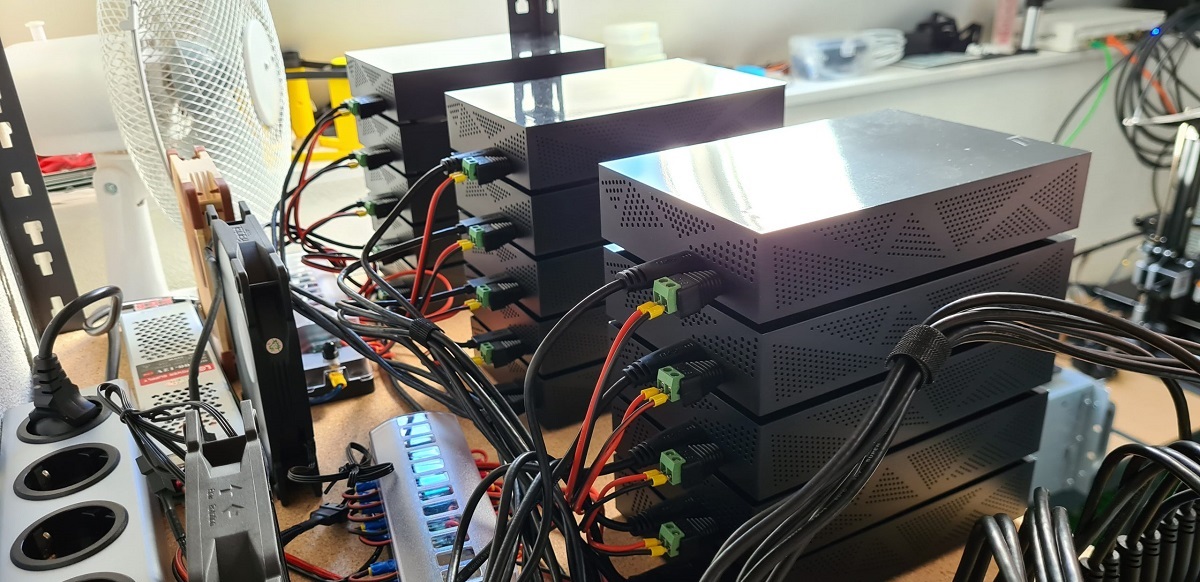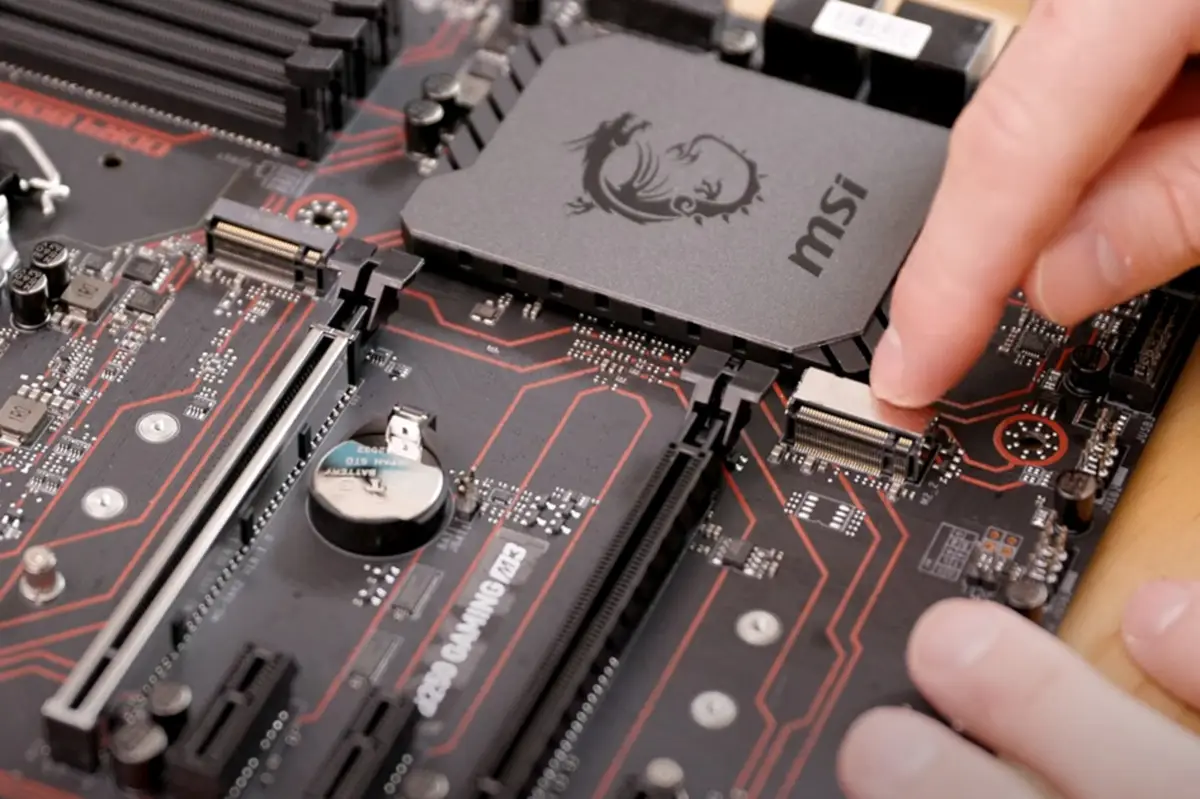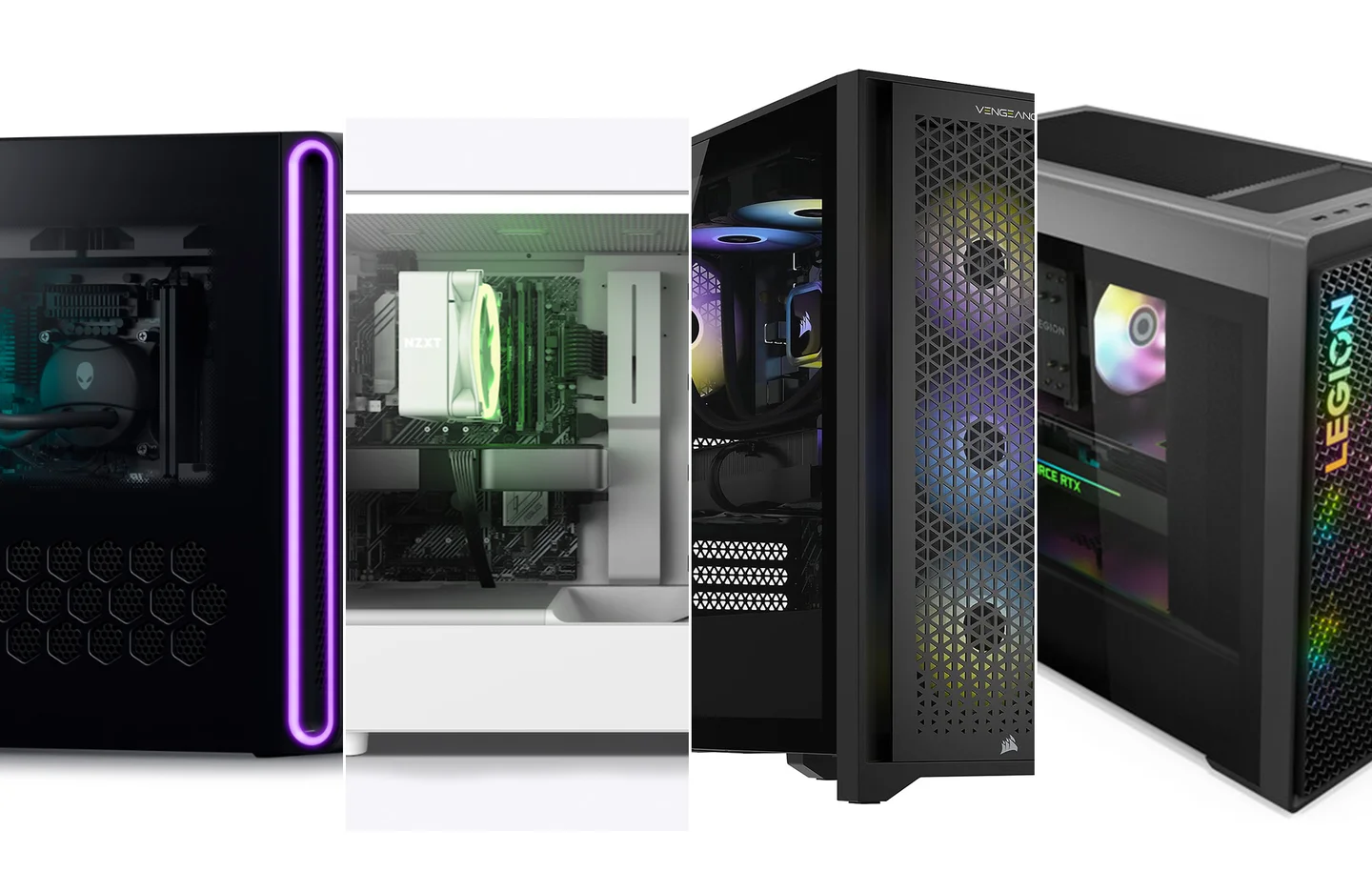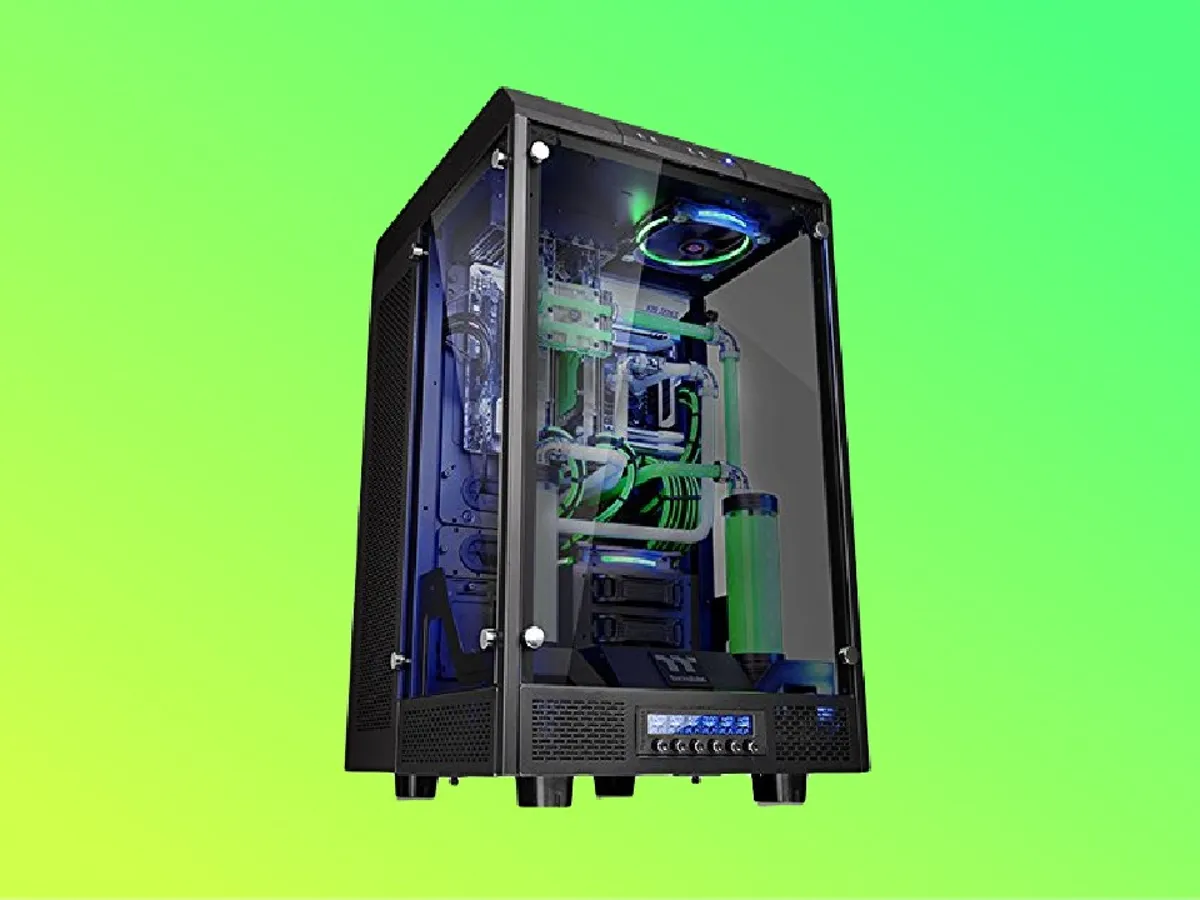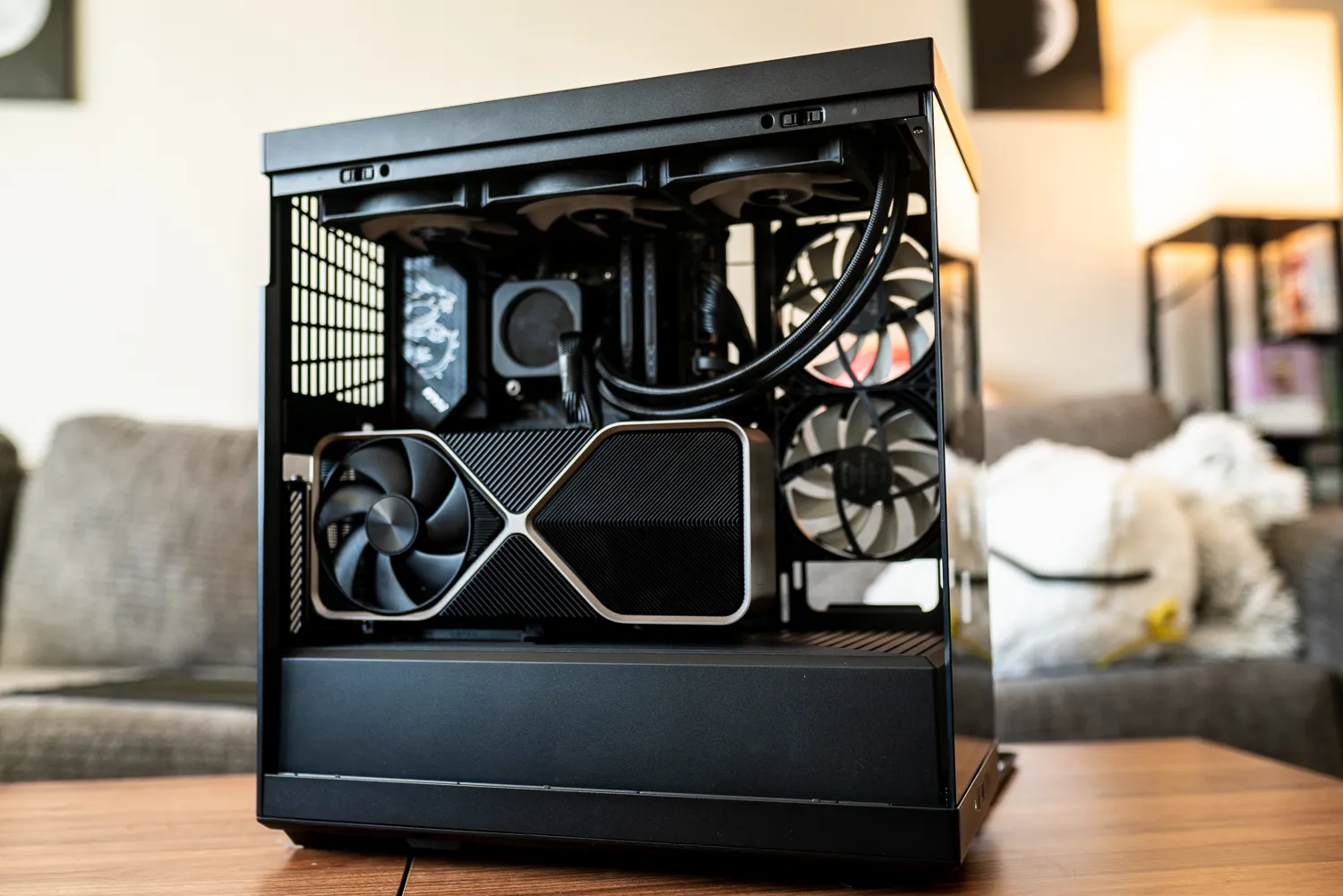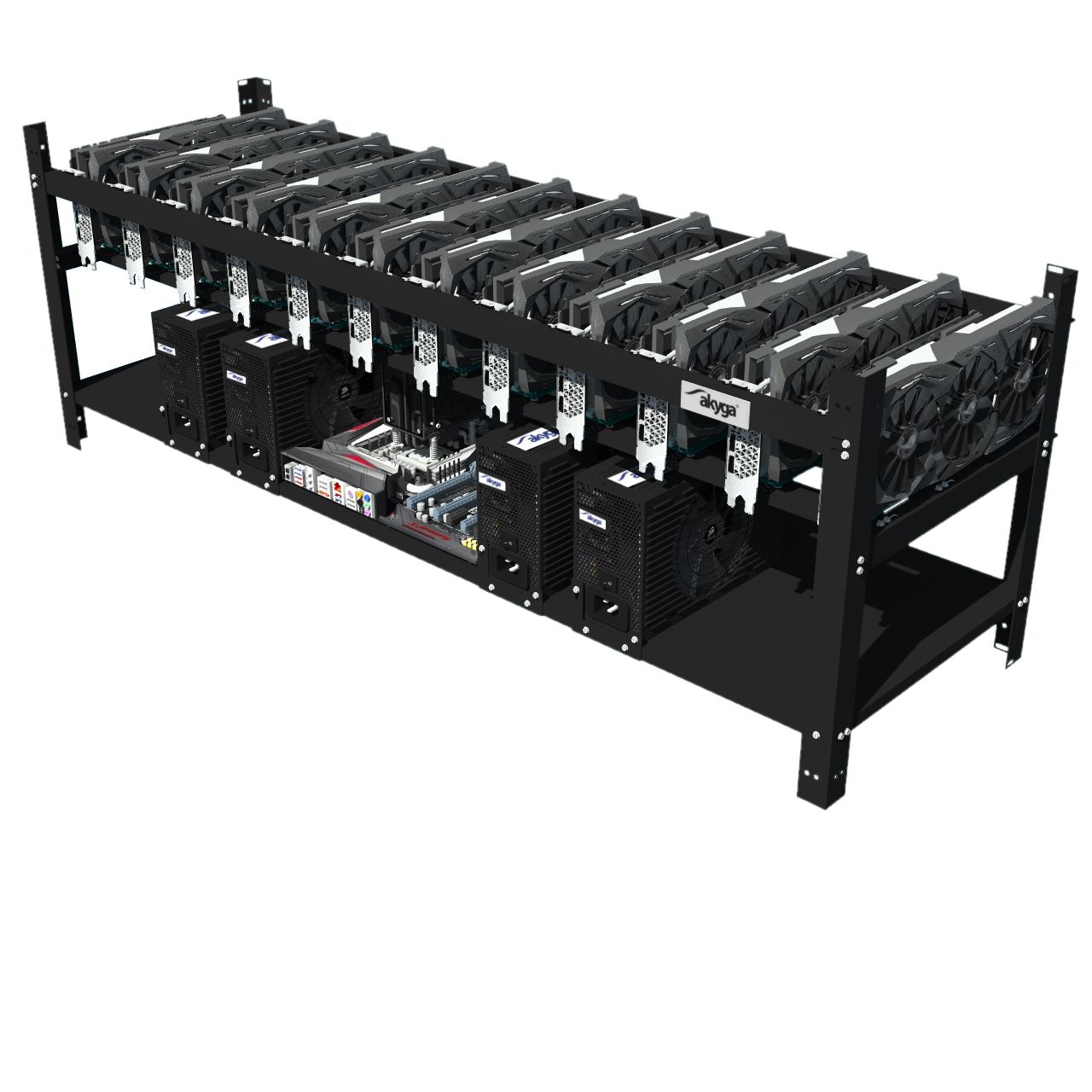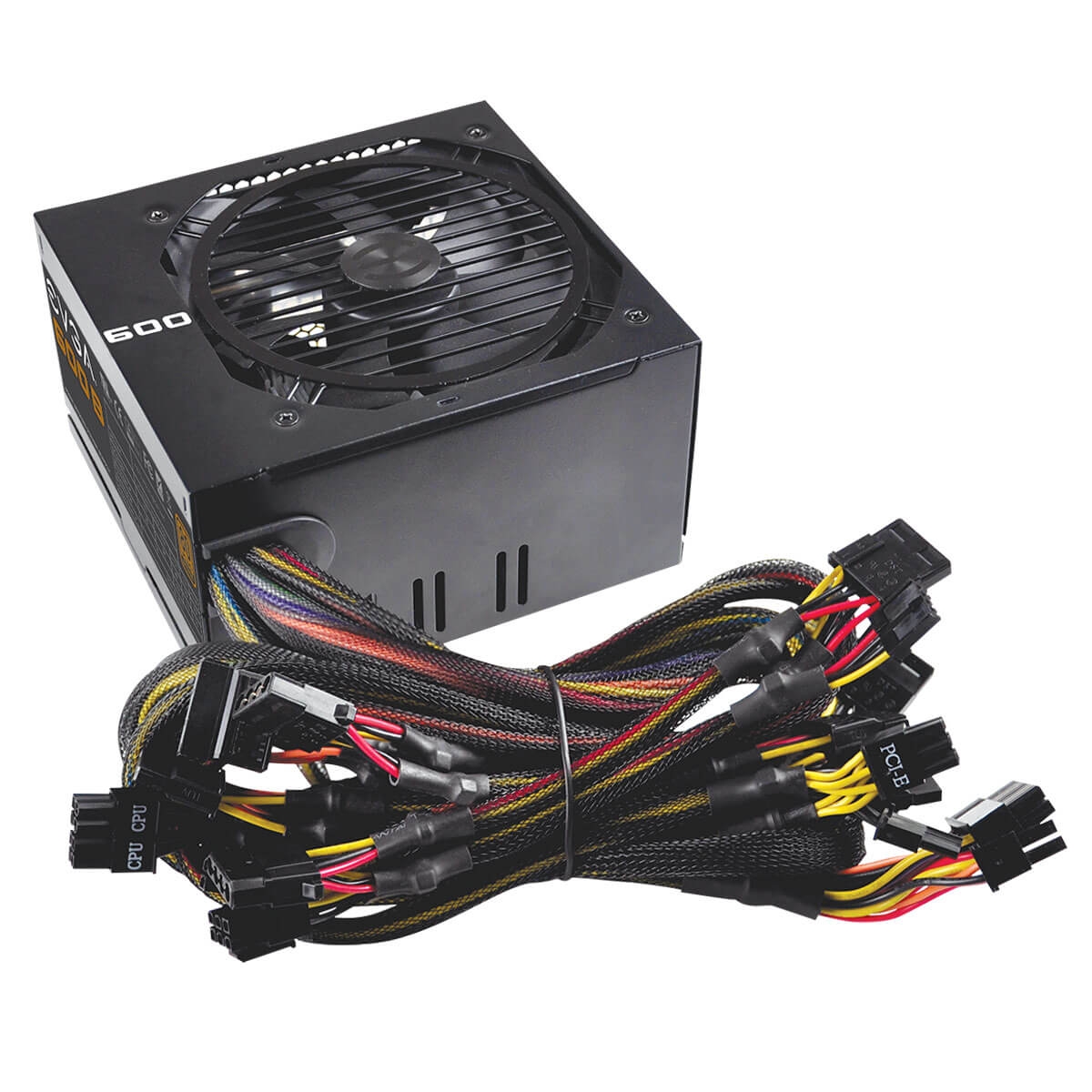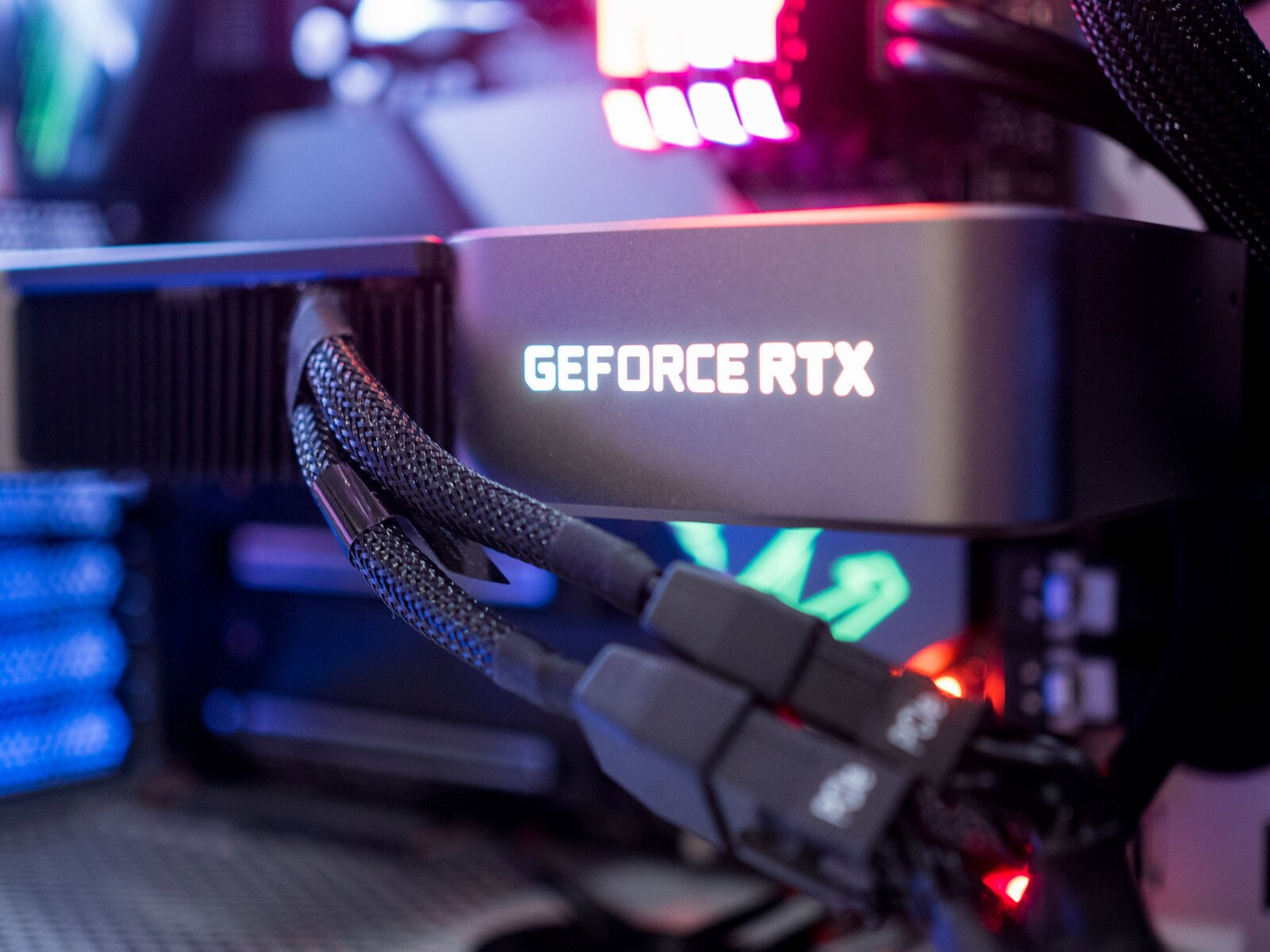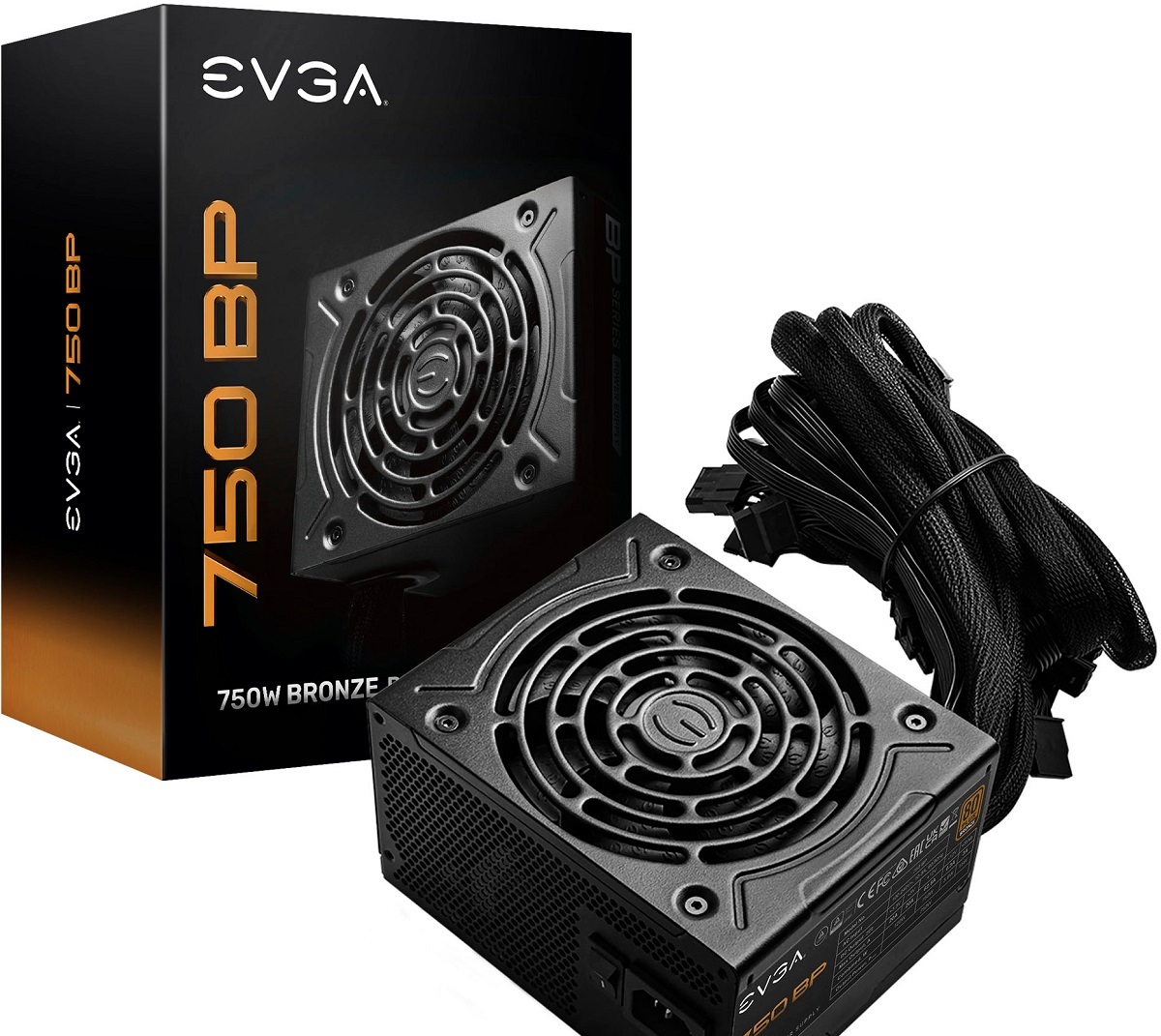Introduction
When it comes to powering multiple hard disk drives (HDDs) in a system, having a strong and reliable power supply unit (PSU) is crucial. The PSU is responsible for supplying the necessary power to all the components in your computer, including the HDDs.
Powering 10 HDDs simultaneously can pose a significant challenge, as these drives have different power requirements and can consume a substantial amount of energy. Choosing the right PSU to handle this load is essential to ensure stable and efficient operation.
In this article, we will explore the factors to consider when selecting a PSU for 10 HDDs and how to calculate the power requirements. We will also provide recommendations on the recommended wattage and tips for ensuring sufficient voltage on each rail.
By understanding these considerations, you can make an informed decision and ensure that your computer system has the necessary power to support multiple HDDs without encountering any performance or stability issues.
Factors to Consider When Choosing a PSU for 10 HDDs
When selecting a PSU to power 10 HDDs, there are several crucial factors to consider to ensure optimal performance and stability. Let’s take a closer look at these factors:
- Wattage: One of the primary considerations is the wattage of the PSU. The power consumption of HDDs varies, and it’s crucial to choose a PSU with sufficient wattage to meet the combined power requirements of all the drives.
- Efficiency: Another important factor is the efficiency rating of the PSU. Higher efficiency PSUs convert more of the input power into usable output power, resulting in less wasted energy and lower operating costs. Look for PSUs with 80 Plus Bronze, Silver, Gold, or Platinum certifications.
- Ampere Rating on the +12V Rail: HDDs draw power primarily from the +12V rail. Checking the PSU’s ampere rating on this rail is crucial, as it determines the amount of power available to the HDDs. Ensure that the PSU can deliver enough amps on the +12V rail to handle the combined load of all the drives.
- Cable Management and Connectors: Consider the cable management options and the availability of sufficient connectors for all the HDDs. A PSU with modular cables can make installation and cable management easier.
- Brand and Quality: It’s essential to choose a PSU from a reputable brand known for producing high-quality units. Investing in a reliable PSU minimizes the risk of power-related issues and ensures longevity.
- Overload and Overvoltage Protection: Look for PSUs that offer overload and overvoltage protection. These safety features can prevent damage to the PSU and other components in the event of a power surge or overload.
- Noise Level: Consider the noise level of the PSU, especially if you prioritize a quiet computing experience. Look for PSUs that are designed to operate silently, with features like fan speed control or Zero RPM mode.
By carefully considering these factors, you can choose a PSU that meets the power requirements of 10 HDDs while offering efficiency, reliability, and other essential features for a smooth and stable computer system.
Power Consumption of HDDs
Understanding the power consumption of HDDs is crucial when choosing a PSU to power 10 HDDs effectively. HDDs can vary in terms of power requirements, depending on factors such as capacity, form factor, and technology. Let’s take a closer look at the power consumption profiles of HDDs:
1. Idle Power Consumption: When an HDD is in an idle state, meaning it is powered on but not actively reading or writing data, it consumes a certain amount of power. Idle power consumption is typically lower than the power consumed during active use. Higher capacity drives and those with faster spinning speeds tend to have slightly higher idle power consumption.
2. Active Power Consumption: When an HDD is actively reading or writing data, it consumes more power than when it is idle. The power consumption varies based on the intensity of data transfer, such as sequential or random access, as well as the workload on the drive. HDDs with higher spinning speeds and larger capacity drives may consume more power during active use.
3. Startup Power Consumption: When an HDD powers on or starts up, it requires a surge of power to spin up its disks and initialize its internal components. The startup power consumption is typically higher than both idle and active power consumption. However, it is a temporary demand and not a continuous power draw.
It’s important to consider the power consumption of each HDD in your system to accurately determine the total power requirements. Manufacturers often provide technical specifications that include information on power consumption, allowing you to estimate the combined power draw of multiple HDDs.
Keep in mind that power consumption can vary based on usage patterns, environmental factors, and specific drive models. Therefore, it is advisable to consider a margin of error when calculating the power requirements to ensure you select a PSU with enough headroom.
By understanding the power consumption profiles of HDDs, you can make an informed decision when selecting a PSU that can handle the power requirements of 10 HDDs efficiently and ensure the stability and optimal performance of your computer system.
Additional Components to Consider
When choosing a PSU for 10 HDDs, it’s essential to consider the power requirements of other components in your system. These components contribute to the overall power draw and must be taken into account to ensure that the PSU can handle the load. Here are some additional components to consider:
- CPU: The central processing unit (CPU) is one of the most power-hungry components in a computer system. High-performance CPUs with more cores and higher clock speeds require more power. Consider the power consumption of your CPU and factor it into your PSU selection.
- Graphics Card: If you have a dedicated graphics card in your system, its power consumption can be significant, especially for gaming or other graphic-intensive tasks. Take into account the power requirements of the graphics card, particularly if it requires additional power connectors from the PSU.
- RAM: Random access memory (RAM) modules have relatively low power requirements compared to other components but should still be considered. A typical RAM module consumes around 3-5 watts, so multiply the total number of RAM modules by this figure and include it in your power calculation.
- Storage Drives: Apart from the HDDs, if you have solid-state drives (SSDs) or other types of storage drives, consider their power consumption as well. While SSDs generally have lower power requirements, it’s important to include them in your overall power calculation.
- Peripherals: Don’t forget to account for the power consumption of peripherals such as keyboards, mice, monitors, external drives, and USB devices. Although their power draw is relatively low, it can add up, especially if you have multiple peripherals connected to your system.
By considering the power requirements of these additional components, you can ensure that the chosen PSU can provide sufficient power for the entire system. Calculating the total power draw from all components will help you make an informed decision and avoid any power-related issues or limitations.
It’s worth noting that power requirements can vary based on specific components, usage patterns, and system configurations. Therefore, it’s advisable to consult the technical specifications of each component and add some headroom when selecting a PSU for a system with 10 HDDs and other components.
Calculating Power Requirements for 10 HDDs
Calculating the power requirements for 10 HDDs is essential to ensure that the chosen PSU can handle the load efficiently. By estimating the power draw of each HDD and considering their combined consumption, you can determine the wattage needed for your system. Here’s how you can calculate the power requirements:
- HDD Power Consumption: Begin by identifying the power consumption of each HDD. Refer to the technical specifications provided by the manufacturer, which include details on the idle and active power consumption of the drive. Note down the power consumption figures for each individual HDD.
- Calculate Total Power Draw: Multiply the power consumption of each HDD by the number of drives you have (in this case, 10) to determine the total power draw of the HDDs. Add up the power consumption figures for all 10 HDDs to get the final result.
- Add Power Margin: It is prudent to add a margin of error to ensure the PSU can handle the load with ease. Adding 10-20% to the total power draw is a good practice to provide headroom for any power spikes or future upgrades.
For example, if each HDD has an average power consumption of 8 watts, the total power draw for 10 HDDs would be 80 watts. Adding a 10-20% margin would bring the recommended PSU wattage to 88-96 watts. Round up to the nearest PSU wattage available to ensure you have enough power to handle the load.
Keep in mind that this calculation only accounts for the power requirements of the HDDs themselves. It is crucial to consider the power requirements of other components in your system, such as the CPU, graphics card, RAM, and peripherals. Add the power draw from these components to your HDD power calculation for a comprehensive estimate.
By accurately calculating the total power requirements for 10 HDDs, including a margin of error and considering other components, you can select a PSU that provides sufficient wattage to power your system effectively and avoid any power-related issues.
Recommended PSU Wattage for 10 HDDs
When it comes to powering 10 HDDs in a system, it’s crucial to choose a power supply unit (PSU) with sufficient wattage to handle the load. Based on the power calculations we discussed earlier, here are some recommendations for the recommended PSU wattage:
1. Minimum Wattage: The minimum recommended PSU wattage for 10 HDDs can be calculated by adding up the individual power consumption of each drive and adding a margin of error. Using the example power consumption of 8 watts per HDD, the total power draw for 10 drives would be 80 watts. Adding a 10-20% margin would bring the minimum recommended PSU wattage to 88-96 watts.
2. Future Upgrades: If you plan to add more components or upgrade your system in the future, it’s wise to choose a PSU with a higher wattage than the minimum recommendation. This allows for additional power headroom to accommodate any potential upgrades or changes to the system configuration.
3. Efficiency Considerations: Consider investing in a PSU with a higher efficiency rating, such as 80 Plus Gold or Platinum. These PSUs provide better power conversion and reduce energy waste, resulting in lower operating costs and a more environmentally-friendly system.
4. Manufacturer Recommendations: Check the manufacturer’s specifications and recommendations for the HDDs you are using. Some manufacturers may suggest a specific wattage range or provide guidelines for selecting a PSU for multiple drives.
It’s important to note that these recommendations serve as guidelines and should be adjusted based on your specific system configuration, usage patterns, and future plans. Factors such as overclocking, additional components, or high-power-demanding tasks may require a higher PSU wattage than the minimum recommendation.
Ultimately, it is advisable to err on the side of caution and choose a PSU with a slightly higher wattage than the calculated minimum. This ensures that the PSU can handle the power requirements of 10 HDDs, as well as any other components in your system, providing stability and avoiding any power-related issues.
Ensuring Sufficient Voltage on Each Rail
When powering 10 HDDs in a system, it’s not only important to consider the total wattage of the power supply unit (PSU), but also to ensure that each rail of the PSU can provide the necessary voltage to meet the requirements of the HDDs. Here are some key considerations for ensuring sufficient voltage on each rail:
1. Understanding PSU Rails: Modern PSUs are equipped with multiple rails that distribute power to different components. Common rails include the +12V, +5V, and +3.3V rails. HDDs primarily draw power from the +12V rail, so it’s crucial to ensure sufficient voltage on this rail.
2. Checking Ampere Rating: Each rail of the PSU has a specified ampere rating, which indicates the maximum amount of current it can supply. Verify that the +12V rail on your chosen PSU can provide enough amperage to cater to the combined power requirements of all the HDDs.
3. Considering Other Components: Take into account the power requirements of other components in your system, such as the CPU, graphics card, and RAM. Each component may draw power from different rails. Ensure that all the rails have sufficient voltage and amperage to meet the collective demands of the components.
4. Modular PSUs and Cable Arrangement: Modular PSUs offer flexibility in cable arrangement, allowing you to connect only the necessary cables. This can help optimize power delivery by minimizing unnecessary cable clutter and potential voltage drop. Follow the PSU manufacturer’s guidelines for cable arrangement and ensure a proper, secure connection.
5. Power Load Balancing: Distribute the power load between the different rails of the PSU to ensure a balanced distribution of power across the system. This helps prevent overloading of a specific rail and ensures stable power delivery to all components, including the HDDs.
6. Safety Features: Consider PSUs with built-in safety features such as overvoltage protection (OVP), undervoltage protection (UVP), and short circuit protection. These features help safeguard your system from voltage irregularities and potential damage.
It’s important to consult the specifications and documentation provided by the PSU manufacturer to ensure that the chosen PSU can deliver sufficient voltage and amperage on each rail. By properly assessing and balancing the power requirements of all components, including the HDDs, you can ensure optimal performance, stability, and longevity of your system.
Choosing the Right PSU for 10 HDDs
Choosing the right power supply unit (PSU) to power 10 HDDs is crucial for the stable and efficient operation of your computer system. By considering the factors discussed earlier and understanding the power requirements of your components, you can make an informed decision. Here are some key considerations when selecting a PSU for 10 HDDs:
1. Wattage and Efficiency: Choose a PSU with sufficient wattage to meet the power requirements of all components, including the 10 HDDs. Consider a PSU with an efficiency rating of 80 Plus Bronze or higher to ensure energy efficiency and lower operating costs.
2. Ampere Rating on +12V Rail: Verify that the +12V rail of the PSU can deliver enough amperage to cater to the combined power needs of all the HDDs. Ensure that the PSU provides a stable and sufficient power supply to avoid any performance issues or potential damage.
3. Cable Management and Connectors: Opt for a PSU with good cable management options and sufficient connectors for all components, including the HDDs. Modular PSUs can help with cable organization, resulting in better airflow and aesthetics within your system.
4. Brand Reputation and Quality: Choose a PSU from a reputable manufacturer known for producing high-quality and reliable units. This minimizes the risk of power-related issues, ensures longevity, and provides better customer support in case of any concerns or queries.
5. Additional Features: Consider additional features such as fan speed control, zero RPM mode, or semi-passive cooling, depending on your preferences for noise levels. These features can enhance the overall computing experience by optimizing cooling and reducing fan noise.
6. Budget: Determine your budget for the PSU, considering the features, wattage, and quality required for your specific needs. While it’s important to find a PSU within your budget, prioritize quality and reliability over cost to avoid potential issues down the line.
7. Check Manufacturer Recommendations: Some HDD manufacturers provide guidelines or recommendations for selecting a PSU to power their drives. Check the manufacturer’s website or documentation to see if they have any specific suggestions regarding the power requirements for their HDDs.
Considering these factors and finding the right balance between power, efficiency, quality, and budget will help you choose the best PSU for powering 10 HDDs. It ensures stable power delivery, optimal performance, and longevity, while providing a reliable foundation for your computer system.
Conclusion
Choosing the right power supply unit (PSU) to efficiently and reliably power 10 hard disk drives (HDDs) is essential for maintaining the stability and performance of your computer system. By considering factors such as wattage, efficiency, ampere rating on the +12V rail, cable management, brand reputation, and additional features, you can make an informed decision that meets the power requirements of the HDDs and other components.
Calculating the power requirements and ensuring sufficient voltage on each rail are crucial steps in selecting the appropriate PSU. By accurately estimating the power draw of each HDD and considering the combined consumption, you can determine the recommended wattage for your system. Additionally, distributing the power load among the different rails, considering other components’ power requirements, and opting for PSUs with safety features contribute to overall system stability.
Remember that while determining the minimum wattage and budget for the PSU is important, it is equally crucial to prioritize quality and reliability. Opting for PSUs from reputable manufacturers helps ensure longevity, minimize power-related issues, and benefit from customer support when needed.
By following these guidelines and understanding the power consumption and requirements of your components, you can select the right PSU that offers optimal performance, efficiency, and stability. Taking the time to choose a suitable PSU for 10 HDDs will provide you with a solid foundation for your computer system and enable smooth and reliable operation for all your computing needs.







